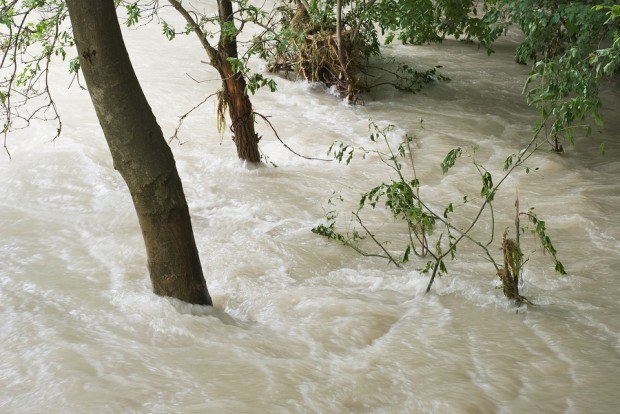Insurers from Lombard General Insurance Co. to American International Group Inc. are bracing for a surge in Indian claims to a 10-year high after unprecedented floods last week ravaged Chennai, the city that’s home to factories of Ford Motor Co. and BMW AG.
Disruption in road, rail and communication networks hindered efforts by the automakers to resume production after they shut down factories on Dec. 2. Officials put the death toll at 277 from the deluge since the start of October as a threefold increase in seasonal rainfall brought the metropolis of nine million to its knees. The Associated Chambers of Commerce and Industry of India estimated losses to businesses at more than 150 billion rupees ($2.3 billion).
The insurance industry expects 10 billion rupees in claims immediately, with most coming from residents who lost property such as motor vehicles, while businesses may claim a bigger share, said Sanjay Datta, head of underwriting at ICICI Lombard General Insurance Co. The disaster in Chennai brought back memories of a 2005 cloudburst in Mumbai that caused similar flooding, prompting 30 billion rupees of claims, he said.
Picture Unclear
“While a clearer picture will emerge in the next few days, it could in all probability be much higher” than the current industry estimate, said M. Ravichandran, president of Tata AIG General Insurance Co., who said the filings could be the highest in India since at least 2005. “Claims on damaged motor vehicles and business establishments will form majority of the insurance claims.”
Small and medium enterprises, automobile manufacturers, utility service providers and information technology companies are among the sectors most affected, he said. Insurers received claims for about 5 billion rupees 15 days ago, he said, which was before the floods.
Monsoon Rains
The fourth-biggest Indian city contributes about 3 percent of the nation’s gross domestic product, with the metropolitan area’s manufacturing industry accounting for 1.5 trillion rupees, according to research by SMERA Ratings Ltd., a partnership between Small Industries Development Bank of India and Dun & Bradstreet Corp. Small industries could potentially lose 8.4 billion rupees a week because of the floods, it said.
The city had a record 1,218.6 millimeters of precipitation in November—three times more than normal—and 506 millimeters this month through Dec. 5, according to forecaster Skymet. The northeast monsoon season typically sets in between October and December over India’s east coast, where Chennai is located.
“An impact from such a natural calamity will have serious ramifications on not only the local but national level,” SMERA said in an email response to a query from Bloomberg. “These estimates are conservative and the financial impact can double with every week of business foregone.”
Too Early
Chennai and its surrounding areas are home to many manufacturers, including Hyundai Motor Co., Ashok Leyland Ltd., Renault SA and Daimler AG. Eicher Motors Ltd., the maker of Royal Enfield motorcycles, said the showers severely affected its facilities, offices and staff, disrupting logistics and the supply chain. In November, it lost production of about 4,000 bikes, it said.
Ford and Renault said they resumed production at their units in the outskirts of Chennai on Monday, though the attendance was thin. Tata Consultancy Services Ltd., India’s biggest software maker, said it doesn’t expect all its employees to report to work after reopening. Cognizant Technology Solutions Corp. said its offices are open and business was “as usual.”
Insurers and reinsurers will share the burden of the claims payouts, ICICI Lombard’s Datta said. Home insurance is very rare in India, and the claims on damages to houses and apartments will be low, said TATA AIG’s Ravichandran.
It is far too early to give estimates on the losses and claims from the event, Munich Re and Swiss Reinsurance Co. said in separate emails.
“As all insurers have reinsurance in case of claims above a certain limit, the net hit on them may amount to a few billion rupees although the overall pay-out could be in the range of tens of billions,” Ravichandran said.





















 How Insurers Can Avoid Post-Merger Technology Failure
How Insurers Can Avoid Post-Merger Technology Failure  Breaking: Andersen to Replace Zaffino as CEO of AIG on June 1
Breaking: Andersen to Replace Zaffino as CEO of AIG on June 1  NOAA Announces Latest AI-Driven Global Weather Models
NOAA Announces Latest AI-Driven Global Weather Models  Why the Middle Market Matters and How Insurers Can Capture It
Why the Middle Market Matters and How Insurers Can Capture It 
